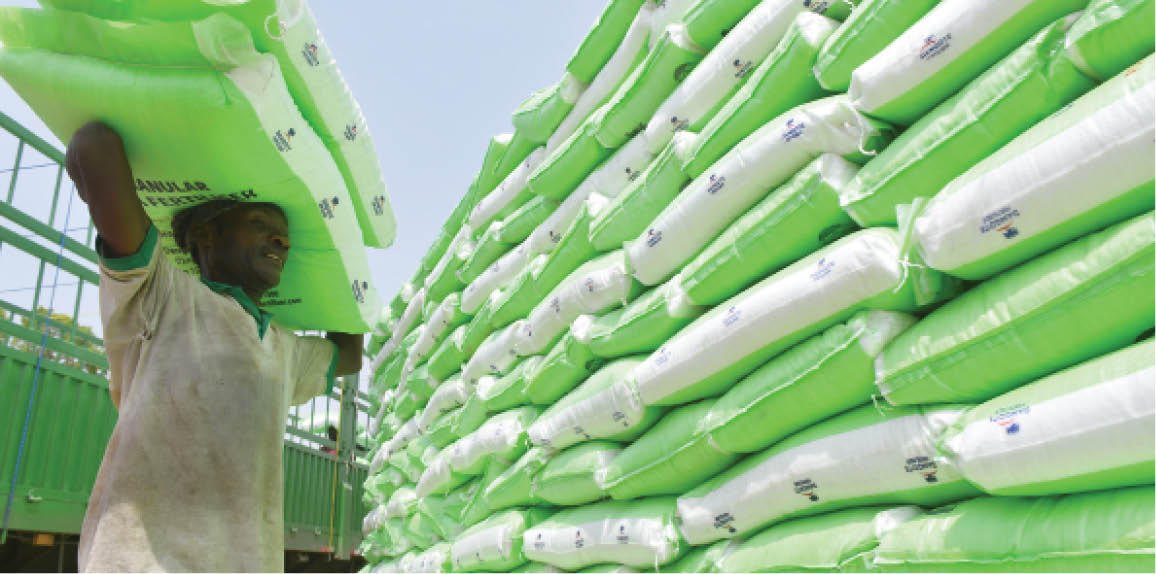Abba Y. Abdullah, Ph.D
In its Seasonal Climate Prediction (SCP), the Nigerian Meteorological Agency (NiMET) predicted for the year 2021 an agricultural growing season that will vary from normal to earlier than normal. The Northern zone will experience onset between May and June, while as early as February is expected in the coastal region.
Annual rainfall over the country is anticipated to range between 300mm in the North and over 3,000mm in the South. It was also predicted that rains will cease at an earliest date of 9th October, 2021 over Katsina and gradually ceasing from extreme North towards the central states by 29th October lasting till 28th November. A dry spell is expected in the month of June in which a moderate dry spell is likely to persist for up to 15 days over Katsina State.
What this foretold is that farmers will face challenges of shortages of moisture, possible flooding in some areas, the need to deploy drought resistance seeds and prudent utilization of resources especially fertilizer in a way that will be at least cost and minimal impact on the environment.
Nigeria has a total land area of 910,768 sq km, with agriculture occupying up to 78% of the area (arable land 37.3%; permanent crops 7.4%; permanent pasture 33.3%). Based on a survey by the Federal Ministry of Agriculture and Rural Development, 80% of the land used in Nigeria is deficient in key elements such as nitrogen and phosphorous. The nitrogen content is estimated at below 0.1% of the total land being cultivated while the phosphorous content is below 10mg/kg.
Application of chemical fertilizer by Nigerian farmers is taken as a default practice in agricultural production. This is true because chemical fertilizers are responsible for between 40 and 60 percent of the world’s food supply; contributes to the production of half of the world food and started the World’s Green Revolution. However, wrong use of chemical fertilizer often results in economic loss to the farmer and the degradation of the environment.
There is therefore the need to balance food production and environmental sustainability which could be achieved through a paradigm shift from adoptive agriculture to precision agriculture especially deployment of the 4Rs Nutrient Stewardship among other strategies.
Crops need 14 essential nutrients (N, P, K, Ca, Mg, S, Cu, Fe, Mn, Mo, Ni, Zn, B and Cl) but nutrients’ use efficiency (NUE) is low, between 5% and 50% due to loss through volatilization, emission, leaching or fixation. In irrigated rice production for example, fertilizer nitrogen use efficiency is usually less than 40%; only one out of three bags of urea are taken up, 60% is lost through ammonia volatilization, 35% through run off and 5% through leaching. The result is low fertilizer application in most Nigeria farm lands. Low fertilizer use is professed to be among the many reasons for low agricultural productivity in Nigeria.
Fertilizer application, estimated at 13 kg/ha in 2009 by the Federal Ministry of Agriculture and Rural Development, is far lower than the 200 kg/ha recommended by the United Nations Food and Agriculture Organization (FAO). This translates to about 6kg/ha of nutrients and is also well below the Abuja Food Summit recommendation of at least 50 kg/ha of nutrients in line with the declaration of the African Union Heads of States of Government on food security and hunger reduction in the continent.
It is therefore pertinent to adopt a more sustainable and impactful use of fertilizer that will be profitable to farmers as well as safe for the environment. The new concept of Nutrient Stewardship (4Rs), i.e., the application of the Right source of plant nutrients at the Right rate, the Right time, and in the Right place are the four “rights” necessary for sustainable management of plant nutrition that increases productivity of plants and crops.
The 4Rs technology provides a framework to achieve cropping system goals, such as increased production, increased farmer profitability, enhanced environmental protection and improved sustainability.
Fertilizers in Nigeria are normally sold with a grade with numbers representing percent nutrient content by weight, for example, 100 kg of a 15-15-15 fertilizer contains 15 kg of nitrogen (N), 15 kg of Phosphorous (P2O5), and 15 kg of Potassium (K2O). For fertilizers containing other nutrients, additional numbers are added with the chemical symbol of the nutrient; for example, a 21-0-0-24S fertilizer contains 21 percent nitrogen and 24 percent sulfur. The right combination of the constituent chemical nutrients based on what a particular soil needs is the Right Source.
Right Rate determines the nutrient use efficiency (NUE) of a crop production system to evaluate effectiveness of fertilizer applications. One common method is to determine a crop’s agronomic efficiency (AE). The typical AE range is 10-25 but varies by type of crop; a high nitrogen feeder like corn has an AE of 15-30 in a well-managed system. As an example, in US, it was found that without any nitrogen, the yield for corn might be 31 tns/hectare and adding 45 Kg of nitrogen increases yields to 47 tns/hectare. It is therefore important for farmers to keep the AE high by finding the optimum right rate, and not exceeding it. This means maximizing nutrient uptake by the crop in a cost-effective manner, while limiting losses from the root zone.
An understanding of crops nutrients uptake dynamics and patterns is an important component in determining appropriate timing of fertilizer applications, i.e. Right Time. The rate of plant nutrient uptake is not consistent throughout the growing season. The pattern is characterized by a slow early uptake increasing to a maximum during the rapid growth phase, and then a decline as the crop matures. Application timed and targeted at specific growth stages can benefit crop yield and/or quality.
Right Place means positioning the nutrients so that a plant can access them. Proper placement allows a plant to better uptake nutrient and in turn, allows it to develop properly and realize its potential yield, given the environmental conditions where it grows. Determining the right place is, in practice, always evolving. Plant genetics, placement technologies, tillage practices, plant spacing, crop rotation or intercropping, weather variability, and other factors can affect appropriate placement.
To mitigate these, Nigerian farmers will have to be shown or taught the 4Rs approach to fertilizer usage. The 4Rs components, i.e., Source, Rate, Time, and Place are interconnected, and none can be right when any one of them is wrong. Application of 4Rs technology therefore requires extensive agricultural extension to educate farmers on this new technology. With the current economic situation, digital extension especially through the use of mobile technology can come to the rescue in this endeavor.
Abba Y. Abdullah, Ph.D writes in via: [email protected]

 Join Daily Trust WhatsApp Community For Quick Access To News and Happenings Around You.
Join Daily Trust WhatsApp Community For Quick Access To News and Happenings Around You.


